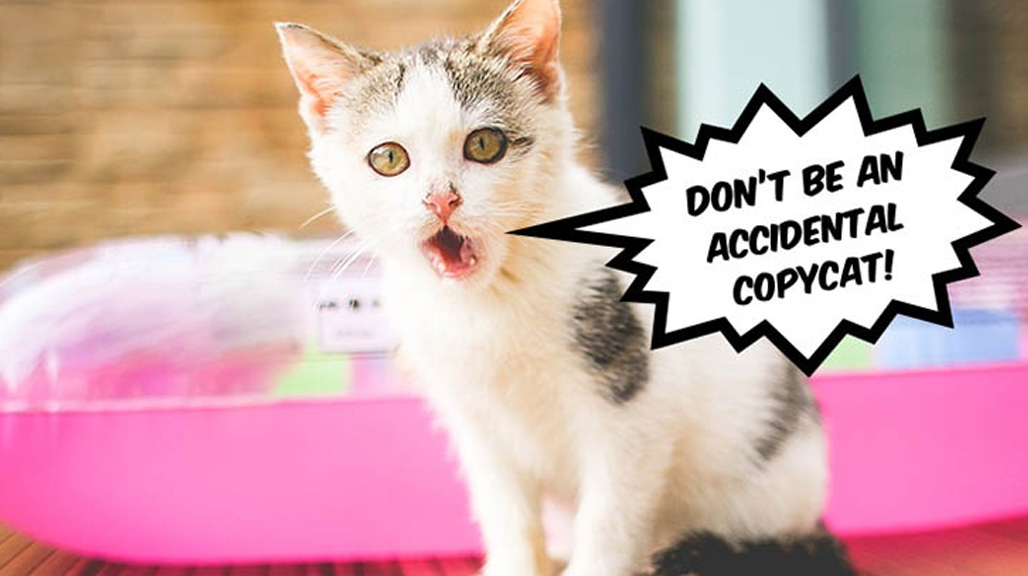Don’t Be An Accidental Copycat – Copyright Basics For Creative Image Sourcing
 Contributed by
Vicki Lew
May 23, 2018
Contributed by
Vicki Lew
May 23, 2018

Disclaimer: While it was my one-time aspiration to be a lawyer, I am not one. I changed my mind when I learnt about the obscene amount of studying that would be involved. This article is written for awareness purposes only and does not serve as legal advice or counsel. Here are copyright basics that all of us internet users can learn.
In the course of our design projects, we receive content from clients on a regular basis. Sometimes our “spidey sense” tingle and we’ll ask where they sourced their images from.
Most will say that they took the photo themselves or that they purchased it from a stock image bank. Once in a blue moon, someone will say “Oh, I Googled for [insert subject here] and found this lovely image so I think we should use it in our website/brochure/saleskit.”
We usually respond with:
The Internet is not a free-for-all buffet.
Just because photos, icons, illustrations and fonts are readily available from the internet, doesn’t mean you have the rights to use them as you wish. Using such creative materials internally for presentations, research or in proposals to cite examples might be fine, but it’s a big no-no to use them for commercial purposes like your blog posts and marketing collaterals.
Safe sources for procuring images:
- Stock image banks
If you need an image quickly or don’t have the budget for custom photography, stock image banks like iStockphoto and Getty Images will be a godsend.You must take note that different license types and terms exist – it’s not a “one-size-fits-all” basis. Some licenses may be for editorial use only, or limited to a certain medium for a specific timeframe. If you are using the images for your commercial merchandise for mass market sales (e.g. T-shirts), you may need to procure an extended license.Be sure to double-check that you’ve got the right license for your intended use.
- Creative Commons
The Creative Commons initiative encourages sharing of creativity, talent, and knowledge with the world. In a nutshell, creative works under a Creative Commons license is free to use, as long as you adhere to the terms of the license. There are six types of licenses to choose from for flexibility.Websites like DeviantArt and Stocksnap.io carry material that is often licensed under the Creative Commons. They are great resources, so please be sure to keep it that way by respecting the authors and reading/honouring the license terms.
Other tips to help you stay safe:
- Do a reverse image search
If you see an image in your search engine results, or on a website that you’d really like to use, try doing a reverse image search on Google. Chances are, you’ll get a hit that takes you to the stock image bank listing for that particular image. You can then purchase a license and use the image without a worry.
- Talent release forms
If you produce your own audio clips, videos and photos, remember to get your talent (interviewees, models, actors,) to sign off on a talent release form. This waives their rights to claim or contest ownership of said material. You can find a standard agreement here that can be modified for your specific use.
The general rule of thumb:
- Always look for terms of use. If there isn’t one, don’t assume that giving a link-back or crediting the owner will suffice.
- Get explicit permission from the author in black and white as proof.
- Whenever possible, purchase a license. Double-check the kind of usage that the license covers.
Look for an alternative if you’re not sure. Don’t “wing it” and leave yourself open to legal action and lawsuits.










Sorry, the comment form is closed at this time.